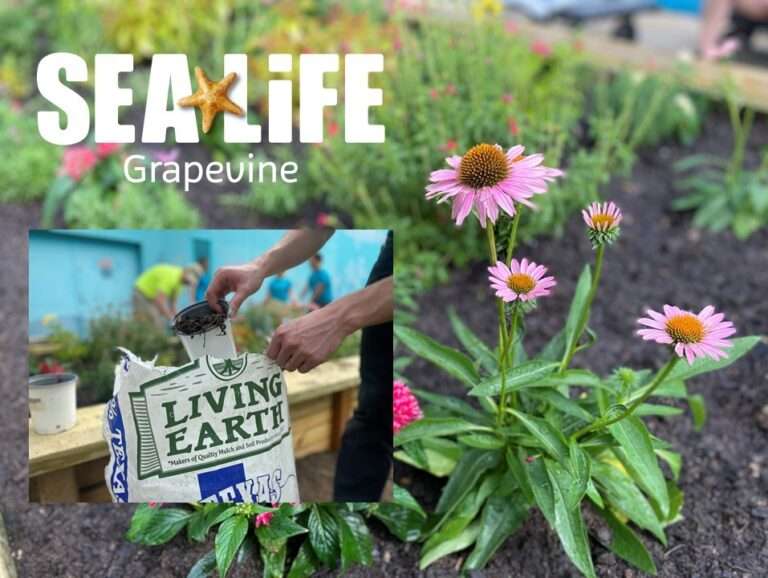
To support efforts to raise awareness for pollinators, Living Earth® forged a partnership with SEA LIFE Grapevine which is part of the world’s largest family of aquariums. With the help of Living Earth and Calloway’s Nursery, the SEA LIFE team is working on an environmentally friendly project – this one is above ground.
According to USDA research, pollinators are responsible for one out of three bites of food we take each day. Without pollinators plants would not reproduce! There are more than 200,000 species of beneficial insects such as bees, butterflies, wasps, ants and moths, and more than 1,000 vertebrates such as birds, bats and small mammals that are also pollinators.
Pollinators travel from plant to plant carrying pollen that allows the transfer of genetic material critical to the reproductive system of most flowering plants – the very plants that:
Unveiled during National Pollinator Week, the SEA LIFE pollinator garden aims to educate the public as it actively attracts butterflies and other pollinators. Living Earth donated Organic Garden Soil and Texas Hardwood Mulch for the raised garden bed to help raise awareness for the importance of mighty pollinator gardens.
Fortunately, SEA LIFE is one of many environmentally minded efforts taking place across the world to save pollinators. From the National Pollinator Garden Network’s successful million pollinator gardens campaign to the increasing number of home pollinator gardens, efforts worldwide are making a critical difference.
For those interested in planting pollinator gardens, Pollinator.org offers regionally specific recipe cards. Living Earth also details step by step instructions for prepping, planting and caring for your raised pollinator garden bed.
SEA LIFE provides immersive marine experiences in nearly 50 locations in 17 countries around the world. SEA LIFE’s team of expert marine biologists pioneer global breeding projects which may one day provide a lifeline to the ocean’s endangered species, as well as nursing sick creatures back to health and returning them to the wild. If they can’t survive in the wild, they are given a safe and happy home for life. For more information on the work SEA LIFE and the SEA LIFE Trust does in protecting our oceans, visit www.visitsealife.com and www.sealifetrust.org.